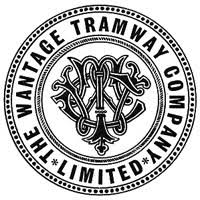Wantage_Tramway
The Wantage Tramway Company was a two-mile tramway that carried passengers and freight between the Oxfordshire town of Wantage and Wantage Road Station on the Great Western Main Line in England. Formed in 1873 to link Wantage Road station with its terminus at Mill Street, Wantage the line was cheaply built[1] parallel to what was then the Besselsleigh Turnpike, and now the A338. The tramway closed to passengers in 1925 and to goods traffic in 1945.
Wantage Tramway | |||||||||||||||||||||||||||||||||||||||||||||||||||||||||||||||||||||||||||||||||||||||||||||||||||||||||
|---|---|---|---|---|---|---|---|---|---|---|---|---|---|---|---|---|---|---|---|---|---|---|---|---|---|---|---|---|---|---|---|---|---|---|---|---|---|---|---|---|---|---|---|---|---|---|---|---|---|---|---|---|---|---|---|---|---|---|---|---|---|---|---|---|---|---|---|---|---|---|---|---|---|---|---|---|---|---|---|---|---|---|---|---|---|---|---|---|---|---|---|---|---|---|---|---|---|---|---|---|---|---|---|---|---|
| |||||||||||||||||||||||||||||||||||||||||||||||||||||||||||||||||||||||||||||||||||||||||||||||||||||||||

